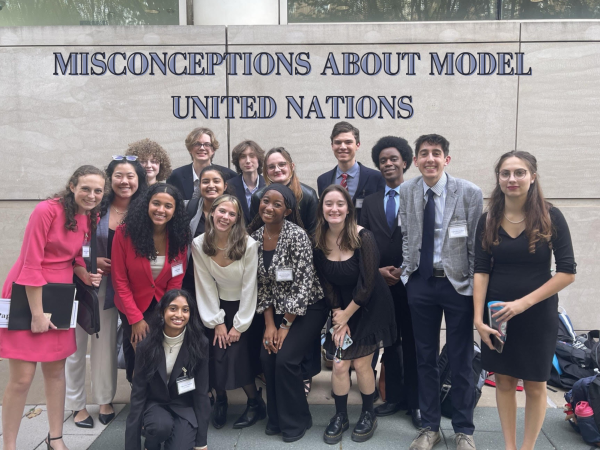An arm and a leg: College summer programs too expensive for students
January 28, 2016
Most high school students recognize the sight of an inbox full of emails boasting in-depth and productive summer programs provided by colleges and companies. Each email looks better than the next, and all of them promise amazing experiences. Unfortunately, these opportunities also come with a price tag. While colleges offer hundreds of summer programs to high school students, their ridiculous expenses alienate the majority of prospective attendees, leaving students with only the wish of attendance.
Almost every major college offers a camp for summer. Examples include the University of Georgia’s journalism-inspired Grady Games ($595), the University of Notre Dame’s Summer Scholars Program ($3,400), and the United States Military Academy’s Summer Leaders Experience ($400). The more stellar programs incorporate opportunities found nowhere else, like meeting with famous leaders in a certain field, visiting historic or popular landmarks, or hands-on experience in reference to the camp. With the dazzling jewels, though, come a dazzling price.
To examine one of the most shocking examples, one can look at Columbia University’s New York City “Summer Program for High School Students.” In the program, students can choose between two options: a Campus Immersion program or an Academic Immersion program. Both focus on learning experiences as well as field trip and cultural opportunities. The program shines until the cost. The Campus Immersion program, which lasts for three weeks and includes course tuition, housing, meals and extracurricular activities costs an outrageous $10,640 per session. Additionally, the program does not provide for meals on the weekend, personal items, or fees related to city activities, and recommends students bring a minimum of $900 for those expenses. Even further, the program advises budgeting between $50-$200 for course materials, and certain classes require additional materials like laptops, iPads, and 35mm SLR film cameras (add another $100-$1300). All expenses bring the total expenditure to anywhere from $11,590-$12,890; for comparison, the tuition rate for one year at most public four-year community colleges averages at $7,605.
The school’s other program, the Academic Immersion program, costs less at $4,870 per three week session, but includes only class tuition and extracurricular activities. The same addition for course materials applies. For both courses, Columbia offers no financial aid except through community organizations, leaving most families to foot the entire bill themselves.
While Columbia’s program tops the spectrum for cost, most other summer programs fall within a similar range. In addition to the programs listed above, other examples include Emory College’s Pre-College Program ($2,694-$5,851), George Washington University’s College Intensive program ($5,492-$9,934), and Boston University’s Summer Challenge ($3,800). The majority of college summer programs cost anywhere from $1,500 to $4,000 dollars on average. For summer programs to cost so much greatly decreases the amount of students they will pull in. I cannot imagine spending nearly twelve thousand dollars on a summer program, no matter how amazing. The average family in the United States, with a median household income of $53,657 per year according to the Census’ 2014 report on Income and Poverty in the US, would not splurge on a program that expensive either.
The programs themselves do not provide the advantages for college application that they advertise. Because of the programs’ expenses, most colleges do not take them into account during applications as a safeguard against privileging wealthier students. For example, Dean of Admissions at Brown University James Miller said in an interview with Bloomberg Business, “These programs are not a back door to the university, nor should they be. It’s something that not a lot of people can afford, so we don’t want to advantage those who have the opportunity.”
Furthermore, college programs only impress the institutions who offer them. For example, if a student attend a Georgia Tech summer program but then does not get into Georgia Tech, putting the program on his or her application for other schools means almost nothing, especially if other prospective colleges offer competing programs.
Cheaper programs do exist, but in minority. The Telluride Association Summer Program at Cornell University and the University of Michigan costs nothing to attendees (minus the travel fees which the organization can help to pay in part). The Jack Kent Cooke Foundation, which funds the program, will also help to pay for work time students may miss while attending the program. As another example, certain states offer advanced summer programs like Georgia’s own Governor’s Honors Program, paid for completely by taxpayers. Free or cheaper programs exemplify the best of the summer program experience, but not the standard.
For the majority of high school students in the United States, outrageously expensive summer programs simply make no sense. While they seem impressive and necessary, their cost makes the programs nothing more than a pipe dream.

















